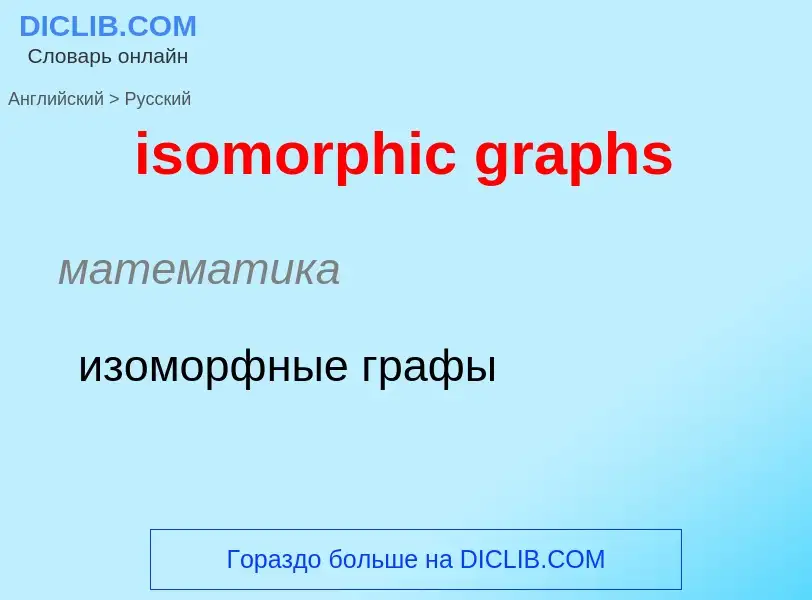Translation and analysis of words by ChatGPT artificial intelligence
On this page you can get a detailed analysis of a word or phrase, produced by the best artificial intelligence technology to date:
- how the word is used
- frequency of use
- it is used more often in oral or written speech
- word translation options
- usage examples (several phrases with translation)
- etymology
isomorphic graphs - translation to russian
математика
изоморфные графы
математика
однородный (регулярный) граф
математика
тетраэдральный граф
Wikipedia
In graph theory, an isomorphism of graphs G and H is a bijection between the vertex sets of G and H
such that any two vertices u and v of G are adjacent in G if and only if and are adjacent in H. This kind of bijection is commonly described as "edge-preserving bijection", in accordance with the general notion of isomorphism being a structure-preserving bijection. If an isomorphism exists between two graphs, then the graphs are called isomorphic and denoted as . In the case when the bijection is a mapping of a graph onto itself, i.e., when G and H are one and the same graph, the bijection is called an automorphism of G. If a graph is finite, we can prove it to be bijective by showing it is one-one/onto; no need to show both. Graph isomorphism is an equivalence relation on graphs and as such it partitions the class of all graphs into equivalence classes. A set of graphs isomorphic to each other is called an isomorphism class of graphs. The question of whether graph isomorphism can be determined in polynomial time is a major unsolved problem in computer science, known as the Graph Isomorphism problem.
The two graphs shown below are isomorphic, despite their different looking drawings

![[[Compound of five tetrahedra]] [[Compound of five tetrahedra]]](https://commons.wikimedia.org/wiki/Special:FilePath/Compound of five tetrahedra.png?width=200)
![[[Compound of ten tetrahedra]] [[Compound of ten tetrahedra]]](https://commons.wikimedia.org/wiki/Special:FilePath/Compound of ten tetrahedra.png?width=200)
